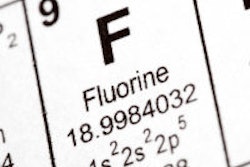
Do any schools in your community offer a fluoride mouthrinse for their students? Do you counsel your pediatric patients, and their parents, to use such a rinse? You probably should, according to a recent Cochrane Library review.
The U.K.-based authors of the review sought to find out whether fluoride mouthrinse was effective and safe for preventing caries, compared with a placebo. The secondary goal was to update a 2002 Cochrane Review on fluoride mouthrinses.
"This review update confirmed that supervised regular use of fluoride mouthrinse can reduce tooth decay in children and adolescents," wrote lead author Valeria Marinho, BDS, PhD, and co-authors (Cochrane Database of Systematic Review, July 29, 2016).
Most prevalent disease
Tooth decay is perhaps the most prevalent chronic disease in both children and adults, the authors noted. Children from lower socioeconomic groups tend to have more tooth decay, and prevention is more cost-effective than treatment, so finding a cost-effective way to prevent tooth decay is considered a priority. One treatment is fluoride mouthrinse, which is often used in school-based programs.
“This review update confirmed that supervised regular use of fluoride mouthrinse can reduce tooth decay in children and adolescents.”
The Cochrane researchers reviewed 37 studies with more than 15,000 adolescent and pediatric participants. A strength of their review was that all but two of the studies included featured more than 100 participants, according to the authors. The average number of participants was more than 420 per trial.
All trials tested the supervised use of fluoride mouthrinse in schools, with two studies also including home use. Follow-up time for the included studies ranged from 1.6 to more than 3 years.
Almost all children in the 35 studies examined received a mouthrinse formulated with sodium fluoride, on either a daily or weekly/twice-a-month basis and at two main strengths: 230 parts per million (ppm) or 900 ppm of fluoride.
After looking at 35 of the clinical trials, the researchers concluded that the supervised, regular use of fluoride mouthrinse can reduce tooth decay. The authors noted they were "moderately certain" about the effect.
For all 35 trials combined, the decayed, missing, or filled surfaces (DMFS) prevented fraction pooled estimate was 0.27 (95% confidence interval [CI], 0.23 to 0.30; p < 0.0001), suggesting a large caries-preventive benefit from the use of fluoride mouthrinse. This was compared with a placebo or no mouthrinse.
The benefit would likely continue even if the children used fluoride toothpaste or lived in areas with community water fluoridation, the authors added.
High risk of bias
Regarding the review's limitations, most of the studies (28 of 35) had a high risk of bias, the authors noted. Also, they found a lack of information about unwanted side effects or the ability of children to "cope" with the use of the mouthrinse.
While these results generally agreed with other reviews on the same subject, this review's selection criteria for studies were different than previous studies and included a number of additional studies, they also noted.
"Most of the evidence evaluated use of fluoride mouthrinse supervised in a school setting, but the findings may be applicable to children in other settings with supervised or unsupervised rinsing, although the size of the caries-preventive effect is less clear," the authors wrote.



















